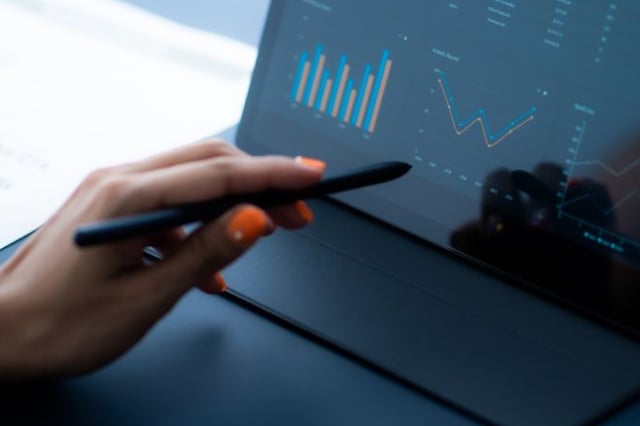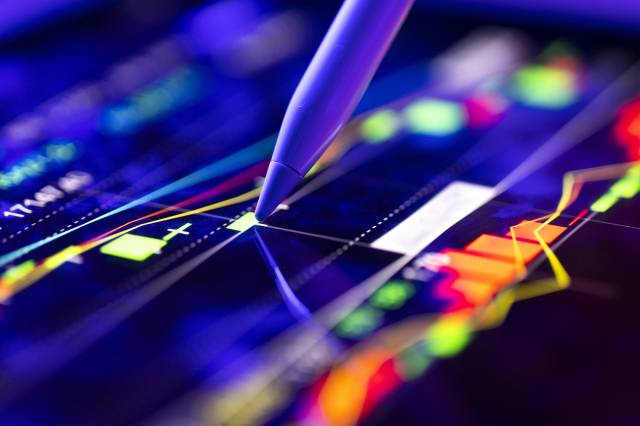Healthcare – where valuation multiples aren’t stretched
Promising pharmaceutical developers, medical software and innovative medical devices – all are propelling the healthcare industry’s next technological leap, with the potential to follow in the footsteps of the famous Cochlear hearing implant or Resmed’s sleep apnea technology.
The challenge for investors is knowing which ones to invest in at the right time.
In their early years, pharmaceutical drug developers will burn through cash and often go through multiple years of clinical trials without any genuine clinical efficacy data nor any prospect of imminent sales, making them risky and unpredictable investments.
But as their clinical trials mature and begin to show signs of efficacy, valuations can quickly become compelling and big pharma gets interested in acquiring them.
With the prospect of future interest rate cuts making longer-dated expected cash flows more attractive investors are gradually returning to more growth orientated earlier stage company investments.
Across the board, valuations are above their 15-year averages. When you go down the market capitalisation spectrum, data shows a similar story – the share market is trading at elevated levels when looking at the current forward 12 months price to earnings multiples when compared with the 15-year historical average.
But within the healthcare sector, and within earlier-stage and smaller capitalised healthcare companies, where drug, medical device and technology development might be relatively untested, we’re finding potential opportunities that have yet to capture the attention of the market.

Cash burn to cash earn
A big part of investing in early stage or smaller healthcare opportunities is about looking for a catalyst or a milestone that could result in better situation for the company in the future.
For a drug developer, this could mean a treatment that’s about to enter a later-stage clinical trial. Or for a medical technology or medical device company, it could mean a tipping point moving from cash burn to cash flow positive.
Knowing when to invest, and which catalysts to look for within which companies could be the difference between picking up a stock cheaply or overpaying and exposing yourself to unnecessary valuation risks.
Aroa Biosurgery, a developer of regenerative soft tissue repair technology; Austco Healthcare, a developer of hardware and software technology for nurse call systems and workflows; Immutep, a cancer immunotherapy drug developer; Nanosonics, an infection control company; and Mach7, a platform for sharing patient medical images are all companies at a stage of development where they are potentially under-appreciated by the broader market.
Some evidence of this tipping point stage may be valuations that are lower than their better-known and further progressed peers.
We believe Austco with its strong nurse call product technology can over time improve patient satisfaction and work flow in hospitals globally. The company is currently consolidating solutions provider businesses in Australia and abroad to supercharge its product sales.
Mach7 technology enables the sharing of images in hospitals trades at a 3.6-times estimated FY25 enterprise value to sales multiple, compared with the better-known healthcare software company Pro Medicus, which trades on a 48.6-times. We like Mach7 because of its more appealing valuation, albeit earlier stage of commercialisation.
We like undervalued opportunities in healthcare that may be on the cusp of cash flow or close to a cashflow breakeven scenario.
We expect Mach7, for instance, to be mildly cash flow generative in FY24, de-risking the need for further capital. We anticipate cashflow to be reinvested back into the business for the foreseeable future but acknowledge that based on where Mach7 is trading currently it becomes an acquisition target itself.
We see Aroa Biosurgery as attractively valued while fast approaching free cashflow neutrality. Austco and Nanosonics have generated free cashflow over recent periods but are more focussed on growing their businesses.

Getting comfortable
It takes a good understanding of the cost of capital and discipline of management within this type of business to become comfortable investing this way. You also need the benefit of having followed the data over many years to fully appreciate the opportunity.
Our ethical screening process makes us specialist investors, with deep expertise in forward-looking industries like technology, healthcare, and energy transition stocks. Because we screen out around 40% of the ASX300, we have more time to focus on these future-focused industries over a long period.
While we like the high growth potential within the individual company stories, what’s also compelling is the expected growth of the addressable market in line with an aging population that continues to seek out more personalised services.
By 2030, 1 in 6 people in the world will be aged 60 years or over, and by 2050, the world’s population of people aged 60 years and older will double (2.1 billion). The number people over 80 is expected to triple between 2020 and 2050 to reach 426 million globally.1
We invest in many early-stage tech, medical device and biotech companies in the Australian Ethical Emerging Companies Fund (Wholesale). The Australian Ethical Emerging Companies Fund (Wholesale) will celebrate its 9th anniversary this year, and has returned 12.6% since inception. Over 7 years, it returned 11.8% per annum. Over 5 years it returned 12.5% per annum (net of fees). All figures are net of fees and as at 29 Feb 2024. This is compared to the fund’s benchmark, the S&P/ASX Small Industrials index which returned 6.9%, 6.3% and 4.3% (gross of fees) over those same periods.

Different strokes
Different types of healthcare companies will bring different earnings and growth characteristics to portfolios.
Pathology, radiology and medical services, for instance, might bring more stable and defensive earnings because they benefit from the aging population trend and are supported by government and insurance reimbursement payments.
Medical technology companies are typically more recurring revenue or software business models with profit margin scaling with revenue.
We see opportunity to invest in pharmaceutical drug developers where there are clear clinical efficacy signals which the domestic equity market is underappreciating.
We are strongly positioned in medical devices business models as we like their ability of a medical device company to innovate over time, maintain reimbursement while building a robust recurring revenue model.
Healthcare breakdown %
Medical device companies and drug developers might start out as cash-hungry and earnings-poor – often needing long runways for development and testing. But they’re also the companies with the greatest potential upside if they can successfully innovate.
We supply capital to immunotherapy drug developer Immutep, which is in cash burn phase, but quickly moving towards late-stage clinical development in combination with blockbuster Keytruda in head and neck and lung cancer. We believe continuing positive clinical data will make Immutep an acquisition target.
Nanosonics is another recent investment: an already profitable medical device company which is now reinvesting into a new infection control product which should double the size of the company in the medium term.
Our holdings in Immutep and Nanosonics are emblematic of the opportunities we invest in with a potential catalyst or milestone in mind.
Alongside our medical services and technology holdings, we believe we are capturing future earnings growth at lower valuation multiples, even in a share market that’s broadly expensive.
1 Ageing and health (who.int)
This information is general in nature and is not intended to provide you with financial advice or take into account your personal objectives, financial situation or needs. Consider if the products are right for you and read the relevant PDS and TMD at australianethical.com.au. Issued by Australian Ethical Investment Ltd (ABN 47 003 188 930, AFSL 229 949) Past performance is not a reliable indicator of future performance. Risk level for this fund is very high. Investing ethically means that the investment universe will generally be more limited than non-ethical portfolios. Returns and volatility may accordingly vary compared to non-ethical portfolios over all investment timeframes. Past performance is not a reliable indicator of future performance.
Get in touch
If you would like to find out more about our Emerging Companies Fund, fill in your details below and our Business Development team will be in touch.



